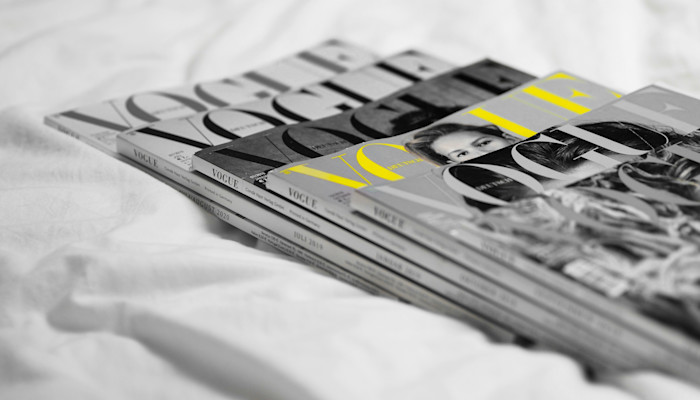Are fashion magazines still relevant in 2021?
I wrote this piece for a university assignment, but I wanted to share it here too. Personally, I love fashion magazines, but I have a complicated relationship with them for various reasons — their promotion of consumerism and unrealistic depictions of women are just the tip of the iceberg. In this essay, I try to unpack whether we still have a need for fashion magazines in a post-COVID-19 world.
When you’re living in a world ridden with climate change, a global pandemic and economic crises, it can be easy to dismiss fashion magazines as trivial “vehicles for luxury fantasies”. But in the wake of it all, these glossy publications are ditching their once-shiny veneers and opting for a more humanist approach.
It goes without saying that in recent years, magazines have taken a hit. Baur Media has torn Australia and New Zealand’s local industries to shreds, closing popular titles like Cleo, Cosmopolitan and Grazia. Similarly, media giant Mercury Capital took a hit to their advertising revenue due to COVID-19 and had to close eight titles in Australia (formally owned by Baur), including Elle, InStyle and Harper’s Bazaar.
It may look pretty dire on the surface, but there’s still hope for print magazines in Australia. Despite being in an increasingly digital world — of which I reluctantly am contributing to — Australians still seem to be preferencing the print magazine over the digital. Roy Morgan research found that in 2019, more than 13 million Australians were still reading print magazines each year. That’s more than half the population. In the same year, Vogue Australia’s readership increased by 29 per cent and Marie Claire readership went up by 18.7 per cent. Sadly, these numbers went backwards in 2020 due to the impacts of you know what, but most of these readerships have still had a net increase since 2018.
Despite the setbacks in numbers, fashion magazines are far from dead. Local fashion and style print titles like Frankie are continuing to cater to over 260,000 readers a year. With trends towards shopping local gaining traction in 2020, Frankie’s focus on local businesses and ethical fashion might be one of the reasons they’re surviving while the glossies fall down around them.
Similarly, Peppermint Magazine and Fashion Journal continue to publish articles on local businesses and fashion brands with a strong focus on ethics, sustainability and inclusivity. Even Vogue Australia appointed a sustainability editor-at-large in 2018, responding to the growing demand for sustainable and ethical fashion.
These local trends are indicative of a wider change in fashion titles around the world. Fashion magazines are shifting their focus away from catwalk reports and trend-forecasting (although these elements are still present), to “serious events and the social issues of the day”.
Following the outbreak of COVID-19, the Italian Vanity Fair featured a surgeon on the cover, the UK Grazia cover featured NHS workers, and the Portuguese edition of Vogue displayed two models kissing through facemasks. Prior to COVID though, some of the biggest titles were already breaking away from the glossy norm. The Duchess of Sussex guest-edited the ‘Faces of Change’ edition of British Vogue which featured stories from inspiring women, including former First Lady Michelle Obama, teenage climate activist Greta Thunberg, inclusivity activist Sinead Burke and New Zealand Prime Minister Jacinda Ardern. The Duchess said she wanted to “steer [the magazine’s] focus to the values, causes and people making [an] impact in the world”.
Over in the US, Teen Vogue has been rebranded in the last few years as a platform for activism, feminism and style that represents a new generation of readers. The change has been spearheaded by the youngest ever Conde Nast editor, Elaine Welteroth, who got the job at the age of 29. She was also the second black editor to hold the position. The magazine has reported on issues relating to the Black Lives Matter movement, #MeToo, gun control and climate change.
So, if you’re still wondering whether we need fashion magazines in 2021, the answer is probably not, but we still seem to want them. The question for me is more about the relevance of their content.
The last few years, and 2020 especially, have shown that consumers care about where their clothes come from as well as what they look like. Fashion, and clothes more generally, are responsible for 8 per cent of global carbon emissions, and the industry employs approximately one in every eight people globally. Personally, I’d like to see fashion magazines including more stories about clothing production, brands working towards sustainable futures, diverse designers, and garment workers — basically, the fashion industry as a whole, not just the consumer-driven, retail and fashion week-focussed end of the spectrum.
